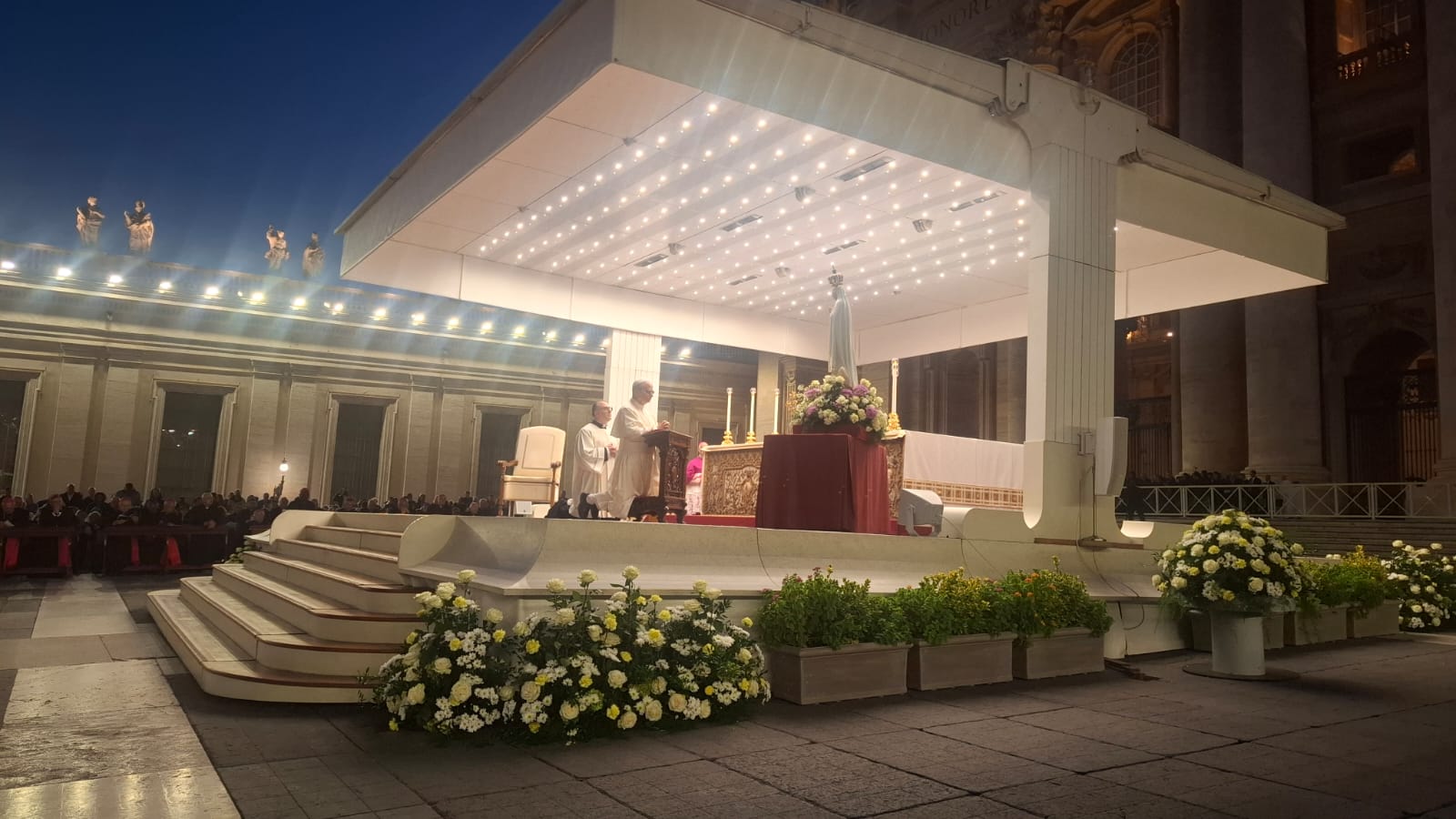15 october, 2025

“A very special moment for all the faithful of Fátima”The day after the statue of Our Lady of Fátima returned from Rome, the Rector of the Shrine reflects on this “particularly intense moment” and analyses it.
The 11th and 12th of October were unique days in the history of the Shrine of Fátima and the original statue of Our Lady of Fátima, with the presence of this century-old sculpture in Rome as part of the Jubilee of Marian Spirituality. During this period, Pope Leo XIV visited the Virgin of Fátima and, before the statue, offered the first Golden Rose of his pontificate and consecrated the world to the Immaculate Heart of Mary. “This Marian pilgrimage was a particularly intense moment for all the participants,” summarised the Rector of the Shrine of Fátima on his return to Portugal. He said that one of the most memorable moments of the journey was the large number of pilgrims who flocked to the Church of Santa Maria in Traspontina on the first day the statue was venerated there. “We saw deeply moved pilgrims offering their prayers before Mary... Pilgrims of hope, who did not miss the opportunity to enjoy this Marian presence,” reported Father Carlos Cabecinhas in statements sent to the Shrine's Communications Office while he was still in Rome. “Once again, we were able to clearly perceive the gravitational and symbolic power of this sculpture, which is very easy to analyse in terms of materiality and plasticity. But when you see it in front of the faithful who pass by it, you understand how much this icon is a very rapid mediation in relation to what it represents,” analysed Marco Daniel Duarte, director of the Museum of the Shrine of Fátima, at the end of the two days. The fact that the first Golden Rose awarded by Pope Leo XIII was given to Our Lady of Fátima and the Shrine of Fátima is another point underlined by Father Carlos Cabecinhas. He also highlighted the prayer for peace that guided the prayer vigil attended by the Virgin of Fátima at the end of the first day, interspersed with the singing of the “Fátima Ave”. “I would highlight two moments from this vigil. One at the beginning, when he offered the Golden Rose, the Pope paused for a moment in prayer before the statue of Our Lady of Fátima, and the other at the end, when, before leaving, he paused again before the statue in prayer.” “Before this image passed the joys, but also the illnesses, infirmities and frailties of humanity, who wept before the statue and asked, in a very loud voice, for a mother's embrace,” emphasised the Director of the Museum. Regarding the second day, the Rector of the Shrine of Fátima highlighted the warm welcome the statue received from the congregation gathered in St. Peter's Square for Sunday Mass, and the Holy Father's reflection during the celebration on the meaning of Marian spirituality as a path that leads to God. “Although bringing this statue of Fátima to Rome is a great responsibility, it is also a very important service that the shrine is rendering to the universal Church itself, as the image can stand in the Roman See with those who are most involved in Marian devotion,” explains Marco Daniel Duarte. “It was undoubtedly a very special moment for all the faithful of Fátima, who had the opportunity to see Pope Leo XIV touch the statue of Fátima for the first time,” concludes the Rector of the Shrine. The statue of Our Lady of Fátima returned to the shrine on the night of 12 October, at the end of the programme celebrating this day of international pilgrimage. The statue was brought back and placed on the pedestal of the Chapel of the Apparitions after a silent procession during which the choir sang “Totus tuus Maria”. Once in its usual place, the statue was incensed by the president of the pilgrimage, and the Golden Rose offered by Pope Leo XIV was displayed in front of it.
|